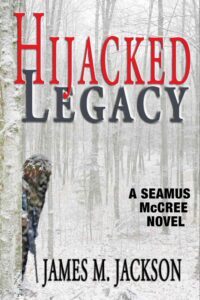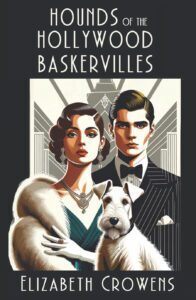Debra H. Goldstein's Blog, page 6
June 24, 2024
Where Do You Get Your Ideas and How Do You Organize Them? by Heather Weidner
 I am often asked about where my ideas for stories come from. Generating ideas has never been a problem. Finding the time to use all of them is usually the issue. Ideas are everywhere, but keeping track of them is also a challenge.
I am often asked about where my ideas for stories come from. Generating ideas has never been a problem. Finding the time to use all of them is usually the issue. Ideas are everywhere, but keeping track of them is also a challenge.
My laptop bag and purse are full of sticky notes of all kinds of names, crimes, and murder weapons. Sometimes, they look like a deadly grocery list.
I constantly jot down cool names, interesting words, weird anecdotes, and funny stories. When I run across interesting news stories, I save the link or the clipping. I write cozy mysteries with amateur sleuths, so I’m always looking for everyday items that can be used as weapons. Hardware stores, auto supply stores, and cookware stores are always good sources of deadly items. When I see something new or interesting, it goes on the list.People know that I write, and they are so kind to tell me about interesting true crime stories or things that happened to them.Sometimes, ideas come from movies, TV shows, classes, workshops, documentaries, or overheard conversations. I make sure to update my notes and add any subject matter expert contacts to my list.I needed a way to keep my notes organized, and a file folder didn’t work with all the scraps of paper. I channeled my technical writing and project management backgrounds and created a spreadsheet. One column has the category (e.g. story idea, cool names, contact information for subject matter experts, story location, and interesting slang.), so I can sort my list. I add notes and brief descriptions of where it came from for my acknowledgements.
This gives me one centralized location where I transcribe all those bits of paper. If I use one in a story, I make a note, so I don’t repeat it elsewhere. My spreadsheet has grown over the years, and this is a good way for me to keep bits of information for use later. When I get ready to write something new, I browse my collection of ideas.
How do you do to keep your ideas organized?
~ ~ ~ ~
Through the years, Heather Weidner has been a cop’s kid, technical writer, editor, college professor, software tester, and IT manager. She writes the Pearly Girls Mysteries, the Delanie Fitzgerald Mysteries, The Jules Keene Glamping Mysteries, and The Mermaid Bay Christmas Shoppe Mysteries.
Her short stories appear in the Virginia is for Mysteries series, 50 Shades of Cabernet, Deadly Southern Charm, Murder by the Glass, and First Come Love, Then Comes Murder, and she has non-fiction pieces in Promophobia and The Secret Ingredient: A Mystery Writers’ Cookbook.
Originally from Virginia Beach, Heather has been a mystery fan since Scooby-Doo and Nancy Drew. She lives in Central Virginia with her husband and a pair of Jack Russell terriers, and she blogs with the
Writers Who Kill.
Website and Blog: http://www.heatherweidner.com
Twitter/X: https://twitter.com/HeatherWeidner1
Facebook: https://www.facebook.com/HeatherWeidnerAuthor
Instagram: https://www.instagram.com/heather_mystery_writer/
Goodreads: https://www.goodreads.com/author/show/8121854.Heather_Weidner
Amazon Authors: http://www.amazon.com/-/e/B00HOYR0MQ
BookBub: https://www.bookbub.com/authors/heather-weidner-d6430278-c5c9-4b10-b911-340828fc7003
Threads: https://www.threads.net/@heather_mystery_writer
The post Where Do You Get Your Ideas and How Do You Organize Them? by Heather Weidner first appeared on Debra H. Goldstein.
The post Where Do You Get Your Ideas and How Do You Organize Them? by Heather Weidner appeared first on Debra H. Goldstein.
June 10, 2024
The End: Wrapping Up a Story by Dianna Sinovic
 When you sit down to write a short story, do you have the ending in mind? Or do you let the story unroll and discover where it’s going only when you get there?
When you sit down to write a short story, do you have the ending in mind? Or do you let the story unroll and discover where it’s going only when you get there?
Endings are my biggest challenge, and I suspect a major challenge for many writers. I have rewritten endings time and again, each draft moving the needle a little closer to what finally works.
At a recent writers conference, one panel, led by Rachel A. Brune of Crone Girls Press, focused on tips for “sticking the ending.” I’ll share some of what they said, as well as what others advise.
One panelist noted that the ending is especially crucial in a short story because it shows the reader that they haven’t been wasting their time. On the other hand, a novel may suffer less with a weak ending because the reader is more willing to forgive if the rest of the book is solid. (Not that you want a weak ending for your novel!)
Another panelist suggested thinking of a short story as a conversation with the reader. In an actual conversation, it would be rude to just walk away, so don’t do that with a story by leaving the reader hanging.
And a third panelist advised reading the ending of the story and then the beginning to see if they connect (they should). If they don’t, then it’s time for further revision.
In a post on Writers Digest, author Garnett Kilberg Cohen offered other tips about story endings.
Cohen advises writing the ending in a way that suggests the story isn’t really over, or that creates a mood or idea about what might happen next. Although in a novel, the expectation is that the main character will undergo a transformation by the book’s end, the limited word count in a short story may not realistically allow that.
Endings can be classified in several ways, according to Master Class:
The resolved ending. Everything is wrapped up by the end, although that doesn’t mean the ending is a “happily-ever-after” one.The unresolved ending. This is more common in a book series, to carry the story forward to the next book.The unexpected ending. This is usually called the twist, but such an ending must be set up with clues or your reader may feel cheated. A twist, according to the conference panelists, must lead the story to make more sense.The expanded ending. This is often done in long form as an epilogue and can jump forward in time.The ambiguous ending. This is an ending that’s open to different interpretations.The tied ending. This ending loops the story back to its beginnings.On LitHub, author Allegra Hyde argues that paying attention to time can help you craft a strong ending that resonates with the reader. You can do this in one of three ways:
Through flashback – the ending looks back at some relevant point in timeThrough present story time – the ending maintains the same chronological line of the storyOr through future time – the ending looks forward beyond the storyWhichever ending type or advice you use, keep in mind that your first draft of an ending is often the easiest approach. For a stronger finale, consider writing several alternative endings to see which one may work better as the last word.
Dianna Sinovic is an author, certified book coach, and editor based in southeastern Pennsylvania. She writes short stories in several genres, including mystery, horror, paranormal, and speculative fiction, and has been published in a number of anthologies. Her flash fiction appears monthly on the blog A Slice of Orange. She is a member of Sisters in Crime, the Horror Writers Association, and the Bethlehem Writers Group. Her website is www.dianna-sinovic.com.
The post The End: Wrapping Up a Story by Dianna Sinovic first appeared on Debra H. Goldstein.
The post The End: Wrapping Up a Story by Dianna Sinovic appeared first on Debra H. Goldstein.
May 27, 2024
The Writer as a Mollusk by Molly MacRae
 My last guest post for Debra’s blog was about being a vagabond writer—one who likes the adventure of taking her characters from town to town or starting over with new stories in new locations. I’ve set stories in towns from the east coast to the west and especially in one place between the two—northeast Tennessee. I also hopped the Atlantic to set stories in the Scottish Highlands. I’m partial to the Tennessee and Scottish settings because I lived in both places and love them. The stories are my way of stopping by for a visit.
My last guest post for Debra’s blog was about being a vagabond writer—one who likes the adventure of taking her characters from town to town or starting over with new stories in new locations. I’ve set stories in towns from the east coast to the west and especially in one place between the two—northeast Tennessee. I also hopped the Atlantic to set stories in the Scottish Highlands. I’m partial to the Tennessee and Scottish settings because I lived in both places and love them. The stories are my way of stopping by for a visit.
Now I’m on the road again. My new series, the Haunted Shell Shop Mysteries, takes place on Ocracoke Island off the coast of North Carolina. I’ve never lived in Ocracoke, but my family and I have taken the ferry there many times starting in 1979. Again, I love the place, and this is my way of getting there more often than I can in real life.
What do mollusks have to do with any of this? Mollusks are the amazing creatures who create the seashells that people have, for at least 160,000 years, collected to use for money, food, tools, ornaments, and for the sheer pleasure of holding something so astonishing in their hands. Maureen Nash, main character in the Haunted Shell Shop Mysteries, is a scientist who studies mollusks. Her focus is freshwater mussels, but in Come Shell or High Water, book one in the new series, she’s in Ocracoke to find out why the guy who owns the shell shop there has been writing intriguing but scammy-sounding letters to her late husband.
How are writers like mollusks? Both creatures create something that attracts strangers—stories and shells. A shell is the mollusk’s skeleton. An outline or first draft is the writer’s skeleton for their story. For some, writing a novel goes at a snail’s pace. Who else is slow? Actual snails. Land and sea snails are mollusks. Some types of mollusks create shells with elaborate shapes and beautiful symmetry. Writers, mystery writers in particular, create elaborate plots, and there’s satisfaction in the symmetry of a story where a crime disrupts a peaceful community, an investigation follows, and order is restored.

Not all mollusks create seashells. Octopuses, squids, and cuttlefish, for instance, are mollusks that don’t. They do have ink, though. So do writers. And think about the people who write while also raising a family and working full-time, and those who write multiple books a year. Can’t you picture them as octopuses with their arms conducting business meetings, stirring something on the stove for supper, reading bedtime stories, folding laundry, feeding the cat, and tapping away at the keyboard?
Here’s one more thought. My family and friends often call me Moll. Short for Molly, of course, not mollusk, but I like the connection anyway. Mollusks and I have a lot in common. Now here I go, sentence by sentence, inch by inch creating my next story.
You can find or order Molly’s books wherever books are sold or lent. Come Shell or High Water comes out June 25, 2024. You’ll find buy links and can connect with Molly at her website.
The Boston Globe says Molly MacRae writes “murder with a dose of drollery.” In addition to the Haunted Shell Shop Mysteries, Molly writes the award-winning, national bestselling Haunted Yarn Shop Mysteries and the Highland Bookshop Mysteries. As Margaret Welch she writes books for Annie’s Fiction and Guideposts. Molly’s short stories have appeared in Alfred Hitchcock Mystery Magazine and she’s a winner of the Sherwood Anderson Award for Short Fiction.
The post The Writer as a Mollusk by Molly MacRae first appeared on Debra H. Goldstein.
The post The Writer as a Mollusk by Molly MacRae appeared first on Debra H. Goldstein.
May 13, 2024
Investing in a Character by James M. Jackson
 I recently read a highly rated thriller. It was a page-turner, with action, and cliff-hangers, and more action. Good guys versus bad guys. The bad guys got badder and badder; the hero overcame his biggest fears and vanquished them. Great story, no plot holes, all story questions resolved. Well done, really.
I recently read a highly rated thriller. It was a page-turner, with action, and cliff-hangers, and more action. Good guys versus bad guys. The bad guys got badder and badder; the hero overcame his biggest fears and vanquished them. Great story, no plot holes, all story questions resolved. Well done, really.
And yet, I remember virtually nothing about it. I don’t recall the title, the author, the main character, the outfit for whom the character worked. Zip.
Attention spans are short, we’re told. For thrillers, people just want the action.
If so, I’m spitting into the wind: I prefer to read and write stories in which character development shares the stage with plot. I remember little of that story, not because of a failing brain, but because I did not become invested in the main character. Nothing significantly differentiated this hero from any other hero in a way that made me want to know what he did before or what he will do next.
One of the surest ways to engage my interest is through a main character’s family and friends. One of my goals is to give readers that same experience. When the Seamus McCree series started (Ant Farm), Seamus’s family comprised his mother, Trudy, (a darts-playing widow who had not spoken in decades); his son, Paddy, a college age white-hat hacker about to graduate; and an estranged sister of whom we knew nothing. In that novel, Seamus meets an assassin who calls himself the Happy Reaper.
My stories take place in real time, so years have passed between Ant Farm and Hijacked Legacy, the eighth book in the series. Seamus’s mother is about to celebrate her 85th birthday. She’s still playing darts and is now very verbal. Paddy is married, a stay-at-home father, and when necessary is still a white-hat hacker. The estranged sister has appeared and disappeared, but Seamus has discovered he also has a stepsister, who is following in his footsteps as a forensic accountant. Paddy’s daughter, Megan, is a force of nature with a strong bond to her Grandpa Seamus.

Throughout the series, readers get to know Seamus through his actions and his family relationships. I claim to write stories that explore financial crimes, family relationships, and what happens when they mix. If that’s the kind of story you like, check out Hijacked Legacy.
I’m curious whether you share my preference to invest in characters. I’d love to learn what you think in the comments.
Hijacked Legacy Blurb
What you don’t know can kill you.
The Happy Reaper, notorious for his chilling efficiency and “Results Guaranteed” calling card, escapes prison. Instead of killing Seamus McCree on sight, he offers a diabolical bargain with a heart-stopping proviso. To live, Seamus must help the Happy Reaper find and eliminate the upstart impostor who’s trashing the assassin’s reputation.
And Seamus must act quickly. Should the Happy Reaper’s bad heart give out or any harm come to him, the criminal underworld will wreak carnage on Seamus . . . and his loved ones.
Can Seamus outsmart the impostor and appease the Happy Reaper without staining his soul with blood? The only thing Seamus knows for sure is that time is running out for him and his family.
Purchase Links:You can purchase Hijacked Legacy at your favorite online retailer or Indie Bookstore. This link will take you to Jim’s website, where you can find links to many online retailers:
https://jamesmjackson.com/novels/hijacked-legacy.html
James M. (Jim) Jackson authors the Seamus McCree series, which includes 8 novels, 2 novellas, and several short stories. The first novel in the series, Ant Farm, was the 25th novel to win a Kindle Scout contract.
Jim is a life member of Sisters in Crime and a past president of the Guppy Chapter. He enjoys teaching and helping other authors as much as he does writing.
He calls home the deep woods of Michigan’s Upper Peninsula. These days he is a snowbird with clipped wings, retreating south only as far as Madison, Wisconsin, when weather and road conditions make access to his U.P. home problematic.
You can find out more about Jim or sign up for his newsletter at his website https://jamesmjackson.com.
The post Investing in a Character by James M. Jackson first appeared on Debra H. Goldstein.
The post Investing in a Character by James M. Jackson appeared first on Debra H. Goldstein.
April 29, 2024
The Delights of Becoming a Musical Mystery Series by Erica Miner
 In my 21 years as a violinist with the Metropolitan Opera in New York, I discovered a number of things. First, opera can kill you. An opera theatre is the perfect environment for mischief, mayhem, and murder. In opera, what happens away from the stage can be more dramatic than what happens on the stage. And opera stories are among the bloodiest, most violent ever written. What better way to bring murder and music together than in the mystery fiction genre? Based on my years of experience at the Met, I can give readers an insider’s view of the conflicts between the thousands of people working backstage, and their murderous thoughts about each other.
In my 21 years as a violinist with the Metropolitan Opera in New York, I discovered a number of things. First, opera can kill you. An opera theatre is the perfect environment for mischief, mayhem, and murder. In opera, what happens away from the stage can be more dramatic than what happens on the stage. And opera stories are among the bloodiest, most violent ever written. What better way to bring murder and music together than in the mystery fiction genre? Based on my years of experience at the Met, I can give readers an insider’s view of the conflicts between the thousands of people working backstage, and their murderous thoughts about each other.

I was thinking along those lines as I wrote Aria for Murder, the story of gifted young Met Opera violinist Julia Kogan. Much like me when I first started out at the Met, Julia is a starry-eyed neophyte who is thrilled beyond belief to be making her debut in the orchestra of the world’s most prestigious opera house on opening night. Little does Julia know something terrible is about to happen. Soon, she finds herself entangled in a murder investigation and ends up the target of a ruthless killer.
Julia is intrepid, smart, and courageous (the beauty of fiction is that you can create a character like yourself but with characteristics you only wish you had). Readers asked for a sequel. One fan’s request was specific: write a sequel and set it at the Santa Fe Opera.
Why Santa Fe? For starters, the company and its setting are unique. The only opera company in the US that performs exclusively in the summer at a contemporary, architecturally distinctive outdoor theatre in the middle of the desert, they have a history of premiering more new operas than any other company. Opera lovers come from all over the world to attend their season year after year.

This was a golden opportunity for me to create Book Two, Prelude to Murder, in which I send poor, unsuspecting Julia into yet another precarious situation. Right away, she’s a fish out of water: a New York City gal dropped into the middle of the New Mexican desert, at an outdoor theatre set between two mysterious mountain ranges—one of which is called “Blood of Christ”—in a city that has more ghosts than any other place in the US. What could possibly go wrong?
No sooner does Julia arrive in Santa Fe than operatic chaos ensues, and she becomes involved in yet another murder investigation. But this time she’s not only pursued by a killer but by the ghosts and spooks that haunt the theatre and everywhere else in Santa Fe. Julia does not like ghosts. Which means, of course, that she encounters more than one.
Thus, I became the writer of a series with a protagonist who has wide appeal and constantly surprises me with her penchant for getting in and out of hot water. It was an absolute blast to get Julia up that musical tree and find ways to get her back down again. While I was researching Prelude to Murder, my work garnered the attention of the dramaturg at San Francisco Opera. Guess where the next sequel takes place?
When I started putting the opera mystery concept into play, it never occurred to me that it had series potential. Now I’m delighting in its limitless capacity to expand. I can set a book in any one of several opera houses from Seattle to Paris to Sydney, Australia. The possibilities are enticing.
Bringing murder and music together fictionally has been a wild, wonderful ride so far. Who knows where this will lead me from here? But most of all I believe that the only thing better than a great story is a great story with music. And being able to share insider information about the behind-the-scenes chaos that takes place at an opera house is one of the most fun rides I have ever experienced.
~ ~ ~ ~ ~
Award-winning Seattle-based author, lecturer and arts journalist Erica Miner believes opera theatres are perfect places for creating fictional mischief! Drawing on her 21 years as a violinist at the famed Metropolitan Opera, Erica’s fanciful plot fabrications reveal the dark side of the fascinating world of opera in her Julia Kogan Opera Mystery series (Level Best Books): Aria for Murder (2022), finalist in the 2023 CIBA and Eric Hoffer Book Awards; Prelude to Murder (2023) (‘A skillfully written whodunit of operatic proportions’--Kirkus Reviews); and Book 3, title TBA to release in Oct. 2024. Erica’s debut novel, Travels with My Lovers, won the Fiction Prize in the Direct from the Author Book Awards. https://www.ericaminer.com
Buy links:Prelude to Murder:
Amazon: https://www.amazon.com/Prelude-Murder-Julia-Kogan-Mystery/dp/1685124429/ref=monarch_sidesheet
Barnes and Noble:
https://www.barnesandnoble.com/w/prelude-to-murder-erica-miner/1144067662?ean=9781685124427
Third Place Books:
https://www.thirdplacebooks.com/book/9781685124427
The post The Delights of Becoming a Musical Mystery Series by Erica Miner first appeared on Debra H. Goldstein.
The post The Delights of Becoming a Musical Mystery Series by Erica Miner appeared first on Debra H. Goldstein.
April 15, 2024
Tax Day, Crime Fiction, and Who We Owe by Jack Sharman
 April 15 is Tax Day, a day that reminds us, as citizens and as writers, that we owe. Owing something or being in debt to someone—financially, spiritually, practically—seems endemic to the human condition. In this matter, our faith or lack thereof does not seem to matter. As Bob Dylan noted on Slow Train Coming (1979), You got to serve somebody.
April 15 is Tax Day, a day that reminds us, as citizens and as writers, that we owe. Owing something or being in debt to someone—financially, spiritually, practically—seems endemic to the human condition. In this matter, our faith or lack thereof does not seem to matter. As Bob Dylan noted on Slow Train Coming (1979), You got to serve somebody.
The notions of what we owe and whom we serve have practical application for fiction writers and, I suspect, for most people who treat their daily work as “art.” A practical challenge in writing fiction is that I put off the work in favor of something else. The “something else” is often useful or even commendable—I practice law and run a blog about crime fiction and cocktails—but it has struck me how easily I kick down the road of the future the can of writing fiction, something I told myself is a priority in life. (For some curious reason, the only place I do not kick the can is in airplanes, even though there is something special about drinking on airplanes. I wrote a blog post about it). Why would one do such a thing? Sticking with our hermeneutic, who do I owe? Who am I serving?
English psychologist Oliver Burkeman thinks we kick the can because, when we settle on a priority at the expense of closing off other options, we are reminded of our mortality. In other words, if I turn to the fiction this morning but the tax returns go unprepared for another day, I am ranking activities. Ranking is just another way of closing off options. The only reason to close off options is because I know that, one day, I will run out of time—I will die. In contrast, people who keep all their options open all the time, Burkeman says, do so at least in part to maintain the pleasant self-delusion that there will always be time, someday—time to write the novel, paint the series, research the biography, or re-plant the garden.
As Burkeman likes to say, How is that working for you?
If, like me, it does not work so well, consider one of Burkeman's tools: break down the project—novel manuscript, ad campaign, financial presentation, endless rows of code, or any other large unwieldy task—into small units of time (work for 15 minutes then stop); or words (500 words); or pages and slides (one page, one slide). It is not for everybody, but there is real value in this micro-approach. Plus, over time, one finds that the parameters can be extended.
Whatever the tools one uses, the antecedent must be the answer to the question: Who do you serve? Who do you owe? As a financial counselor might say, Who do you pay first? Perhaps in fiction as in finance, the answer, in order to produce art, must always be me.
A native of Alabama and a graduate of Harvard Law School, Jack Sharman is a white-collar criminal defense lawyer. His comments on white-collar trials and government investigations have appeared in the Washington Post, the Wall Street Journal, Bloomberg, the Guardian, and other national outlets. He blogs about white-collar matters, crime fiction, and cocktails at “White Collar Wire” (jacksharman.com). Jack holds an MFA in fiction from Washington University in St. Louis, a B.A. from Washington and Lee University, and has been published in The Southern Review and elsewhere.
The post Tax Day, Crime Fiction, and Who We Owe by Jack Sharman first appeared on Debra H. Goldstein.
The post Tax Day, Crime Fiction, and Who We Owe by Jack Sharman appeared first on Debra H. Goldstein.
April 1, 2024
Jumping Ship, But Not Overboard by Elizabeth Crowens
 Stephen King has done it. J.K. Rowling has done it with a pen name. What am I talking about? When an author writes in more than one genre. I don’t consider The Shawshank Redemption or The Green Mile as horror, and yet, they are probably my two favorite stories by King. Not quite Carrie, Christine, or Cujo, and the woman who wowed us with the boy wizard wrote the Cormoron Strike mystery series under the Muggle name of Robert Galbraith. Unless we are at the top of the A-list, all of us writers have been told that we need to create our “brand” and grow our fanbase and readership. So how does one do this when we become known in one particular genre, and all the sudden we make a turnaround? Good question, because I’m learning that as I go along.
Stephen King has done it. J.K. Rowling has done it with a pen name. What am I talking about? When an author writes in more than one genre. I don’t consider The Shawshank Redemption or The Green Mile as horror, and yet, they are probably my two favorite stories by King. Not quite Carrie, Christine, or Cujo, and the woman who wowed us with the boy wizard wrote the Cormoron Strike mystery series under the Muggle name of Robert Galbraith. Unless we are at the top of the A-list, all of us writers have been told that we need to create our “brand” and grow our fanbase and readership. So how does one do this when we become known in one particular genre, and all the sudden we make a turnaround? Good question, because I’m learning that as I go along.
My first novel was Silent Meridian, Book One in the Time Traveler Professor series. In a nutshell, it’s a 19th century X Files meets H.G. Wells’ Time Machine, featuring Arthur Conan Doyle and his paranormal enthusiast, John Patrick Scott. Technically, its genre is considered alternate history, which falls under the umbrella of science fiction fantasy. Although I have one more book to write in that series, I’ve become far more enthusiastic about writing Hollywood-themed mysteries since I’m a film fanatic and worked in the entertainment industry for many years and felt the need to incorporate all my knowledge and experience into a series or two.

When inspiration struck to create a “soft-boiled” (as opposed to hard-boiled or noir) private eye series with humor with a female protagonist, I chose the 1940s in Hollywood—a far cry from two curious Victorians who wind up traveling back in time to feudal Japan in the first novel. However, I will drop a little hint. My new novel has something to do with Sherlock Holmes.
Since I attended a lot of different science fiction fantasy, mystery, and pan-genre writers conventions since 2012, networking like crazy, I didn’t want to create another pen name (Crowens is a nom de plume) and confuse readers, but I made it clear in my swag, on panels, and through social media that I was switching my focus. Have I given up on the former? No. Although I haven’t attended any speculative fiction conferences since before the pandemic, I will revisit my first World Fantasy Convention this year just to stay in touch with friends and let them know what I’m up to now.
Hounds of the Hollywood Baskervilles Synopsis:Asta, the dog from the popular Thin Man series, has vanished, and production for his next film is pending. MGM Studios offers a huge reward, and that’s exactly what young private detectives Babs Norman and Guy Brandt need for their struggling business to survive. Celebrity dognapping now a growing trend, when the police and city pound ridicule Basil Rathbone and ask, “Sherlock Holmes has lost his dog?” Basil also hires the B. Norman Agency to find his missing Cocker Spaniel.
The three concoct a plan for Basil to assume his on-screen persona and round up possible suspects, including Myrna Loy and William Powell; Dashiell Hammett, creator of The Thin Man; Nigel Bruce, Basil’s on-screen Doctor Watson; Hollywood-newcomer, German philanthropist and film financier Countess Velma von Rache, and the top animal trainers in Tinseltown. Yet everyone will be in for a shock when the real reason behind the canine disappearances is even more sinister than imagined.
Purchase Links:You can purchase Hounds of the Hollywood Baskervilles, the first book in Elizabeth’s new humorous mystery series on Amazon https://www.amazon.com/dp/1685125425/ref=sr_1_1
Limited signed copies are currently available at The Mysterious Bookshop. https://www.mysteriousbookshop.com/products/elizabeth-crowens-hounds-of-the-hollywood-baskervilles-preorder-signed-paperback
Elizabeth Crowens is bi-coastal between Los Angeles and New York. For over thirty years, she has worn many hats in the entertainment industry, contributed stories to Black Belt, Black Gate, Sherlock Holmes Mystery Magazines, Hell’s Heart, and the Bram Stoker-nominated A New York State of FrighAt, and has a popular Caption Contest on Facebook. Awards include: Leo B. Burstein Scholarship from the MWA-NY Chapter, NYFA grant to publish New York: Give Me Your Best or Your Worst, Eric Hoffer Award, Glimmer Train Awards Honorable Mention, Killer Nashville Claymore Award Finalist, two Grand prize, and three First prize Chanticleer Awards. Crowens writes multi-genre alternate history and historical Hollywood mysteries. Sign up for her free monthly newsletter to receive free eBooks of Best of the Caption Contests.
www.elizabethcrowens.com
facebook.com/thereel.elizabeth.crowens
x.com/ECrowens
Instagram.com/ElizabethCrowens
The post Jumping Ship, But Not Overboard by Elizabeth Crowens first appeared on Debra H. Goldstein.
The post Jumping Ship, But Not Overboard by Elizabeth Crowens appeared first on Debra H. Goldstein.
March 18, 2024
The Perfect Watson: Finding a Memorable Sidekick by C.B. Wilson
 Sidekicks can make or break a story. In a great mystery, the main character’s “helper” is as important as the plot itself. I mean, how else will the heroine find the killer without another viewpoint? This assistant needs to be loyal, supportive under duress, offer inspiration, have unique skills, and never, ever outshine the protagonist, yet be interesting enough to advance the plot with an enlightening perspective.
Sidekicks can make or break a story. In a great mystery, the main character’s “helper” is as important as the plot itself. I mean, how else will the heroine find the killer without another viewpoint? This assistant needs to be loyal, supportive under duress, offer inspiration, have unique skills, and never, ever outshine the protagonist, yet be interesting enough to advance the plot with an enlightening perspective.
A study of legendary main characters and their equally legendary sidekicks, like Batman and Robin, Hans Solo and Chewbacca, and Sherlock Holmes and Watson, offered a few key personality traits. Loyalty, bravery, and intelligence topped the list. According to Webster’s Dictionary, that’s the definition of a dog. In my opinion, man’s best friend really is the perfect partner. That each dog breed has specific traits lead to an “ah ha” moment. Why not write a series of books focused on using those special canine characteristics to solve mysteries? Add a cat-person sleuth and the humorous, ironic, and sometimes poignant, Barkview Mysteries were born.




Easy, right? Fido checks all the appropriate sidekick boxes. Not so much according to the feline fancier Cat Wright, whose ear-ringing objections made me even more certain she needed a little puppy love. You see, she doesn’t hate dogs, she just prefers sleek, independent, and litter-box-trained cats. Which makes her the most unpopular person in Barkview, the self-proclaimed dog-friendliest city in America. In a town where designated leash lanes lead to hound playgrounds and every resident has a BFF (that’s a Best Furry Friend) except Cat, the certainty that a “right” dog exists for everyone is inescapable.
With so many hounds to help and life lessons to learn, where does a circumspect cat lover start? Renny, the queen show dog Cavalier King Charles in Cavaliered to Death, causes Cat to reflect on the value of companionship. Gem, the German Shepherd in Shepherded to Death, who lives to protect, saves her life. The long list of canine collaborators educates as much as they entertain. Is there a “perfect”, permanent pup sidekick out there for Cat? Join the journey. Only time will tell. 
To follow Cat’s journey and learn more about the Barkview Mysteries: www.cbwilsonauthor.com
Amazon: https://www.amazon.com/C-B-Wilson/e/B09DXF436G
Facebook: https://www.facebook.com/cbwilsonauthor
The award-winning author of the Barkview Mysteries series, C.B. Wilson’s love of writing was spurred by an early childhood encounter with a Nancy Drew book where she precociously wrote what she felt was a better ending. After studying at the Gemology Institute of America, she developed a passion for researching lost, stolen, and missing diamonds–the big kind. Her fascination with dogs and their passionate owners inspired Barkview, the dog friendliest city in America.
C.B. lives in Peoria, AZ with her husband. She is an avid pickleball player who enjoys traveling to play tournaments. She admits to chocoholic tendencies and laughing out loud at dog comics.
The post The Perfect Watson: Finding a Memorable Sidekick by C.B. Wilson first appeared on Debra H. Goldstein.
The post The Perfect Watson: Finding a Memorable Sidekick by C.B. Wilson appeared first on Debra H. Goldstein.
March 4, 2024
2024 Alabama Writing Workshop – Get Your Writing Published March 15, 2024 – 9:30 a.m. – 5: 00 p.m.
Embassy Suites Birmingham (Woodcrest Place) – Debra will be teaching a master class in Creating Conflict from 10:30 a.m. – 11:45 a.m.
The post 2024 Alabama Writing Workshop – Get Your Writing Published March 15, 2024 – 9:30 a.m. – 5: 00 p.m. first appeared on Debra H. Goldstein.
The post 2024 Alabama Writing Workshop – Get Your Writing Published March 15, 2024 – 9:30 a.m. – 5: 00 p.m. appeared first on Debra H. Goldstein.
THE WRITING OF ‘WINTER’S END’ by Barbara Pronin
 As the author of seven cozy mysteries, beginning to write a historical novel was like hiking an unexplored trail.
As the author of seven cozy mysteries, beginning to write a historical novel was like hiking an unexplored trail.
A mystery writer constructs a fictional puzzle and uses small revelations and a bit of misdirection to build and maintain suspense – none of which seemed like the right tools to unpack for a historical World War II journey.
‘Winter’s End’ was born to me when I read a true story about teenaged sisters Truus and Freddie Obersteegen, who joined the Dutch Resistance during the last months of Nazi occupation. Among other heroics, they flirted with half-drunk Nazi officers in smoky Dutch taverns, luring them to their deaths at the hands of Resistance leaders who robbed them of their uniforms and identification for use by Jews and others fleeing Hitler’s wrath.
Somehow, the sisters morphed into one as gutsy Evi Strobel, who moved into my head, threw down her keys, and refused to leave until I told her story. Evi, who lived on a houseboat with her tough-spirited mother, hauled aboard her alternate story tellers – the resourceful veterinarian Zoe Visser, and Mila Brouwer, the beautiful daughter of a German collaborator – composite spirits drawn from the true-life stories of Dutch Resistance heroines like Hannie Schaft, Corrie Ten Boom, Tina Strobos, and others who found ingenious ways to feed the starving and flirt with danger to outwit their Nazi oppressors.
While the relationships of my characters are largely fictional, their adventures are based on fact, and I felt it was important to keep the timeline of the war accurate; to know the position of the Allies at certain points during the war, to understand how military actions, Resistance strategies, and sometimes even the weather could change the course of history.
I have been to Amsterdam twice, but I wanted to return – to see the fields of tulips, walk the streets of Haarlem, steer a houseboat on the Spaarne River. But I wrote the book during the pandemic, when travel was out of the question, so I closed my eyes and scoured my memory for visuals I could resurrect.
I scanned non-fictional accounts of the period, online and in books. Wikipedia was a treasure trove for zeroing in Dutch geography, specific incidents, even illustrated uniforms and artillery.
Through Holocaust survivor’s groups, I talked with an elderly Dutch woman who lived through the occupation as a child hidden from the Nazis by non-Jewish families. While she was too young at the time to remember much that was helpful, it was from her that I picked up a few phrases, like, ‘my hiding mother,’ that I think add realism to ‘Winter’s End.’
But it was Evi, and the times and characters we explored, who propelled me through the journey. I wrote the last scene in my head so many times in the middle of the night, that when it was finally time to write it, I simply could not type fast enough.
In all, it was a journey I am game to repeat when a new character moves into my head – a character-driven tale that puts me and my readers into another compelling time and place – a time and place I cannot yet imagine, but very much look forward to exploring.
# # #
Winter’s End (available in August 2024)
At once a World War II love story and a tale of incredible bravery, “Winters End traces the missions of three young women of the Dutch Resistance from the cobblestoned streets of Nazi-occupied Holland to a remarkable denouement more than 70 years later and a world away.
Award-winning novelist Faye Kellerman calls it, “a gripping page-turner filled with honest characters that capture both heart and soul.”
# # #
Barbara Pronin saw her first byline in a community newsletter at age eight and was forever hooked on writing. She has worked over the years as an actress, a probation officer, a news editor, and a substitute teacher, the last of which inspired her first book, a non-fiction guide to effective subbing that is still in print more than 30 years later.
Her earlier mysteries, including three as Barbara Nickolae, earned kudos from such best-selling writers as Mary Higgins Clark and Tony Hillerman, and have recently been republished. Her latest mystery, “The Miner’s Canary,” was published last October. Her newest work, a World War II historical titled, “Winter’s End” will be released in August 2024.
A lover of dark chocolate, Greek sunsets, and Dodgers baseball, Barbara lives and works in Orange County, Calif., where she writes on real estate for RISMedia and is eagerly waiting for the next cast of characters to take up residence in her head and demand that she tell their story.
The post THE WRITING OF ‘WINTER’S END’ by Barbara Pronin first appeared on Debra H. Goldstein.
The post THE WRITING OF ‘WINTER’S END’ by Barbara Pronin appeared first on Debra H. Goldstein.



